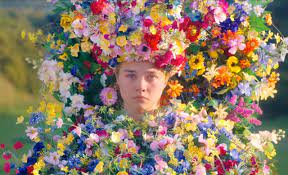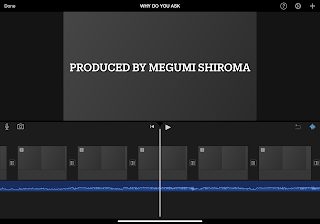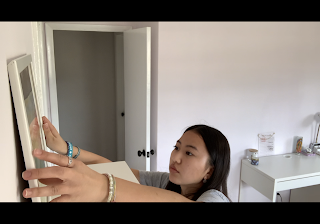Genre Research: Horror
- high angle
- close up
- tracking shot
- flash backs
- tilted angle
- low angle
- POV shot
- slow dolly
- Common Mis-en-Scene in your genre (CLAMPS)
Costumes (C): Dependent on the character. Main protagonists usually wear light colors, like a little girl in pastel colored clothes or a teenager in jeans and a sweater. There are certain tropes that do contribute to costumes, ranging from villains to their victims. Usually antagonists have a noticeable, easily remembered costume. For example, Freddy Kruger from “A Nightmare on Elm Street,” is easily recognized by his green and red sweater. Jason Voorhees from “Friday the 13th” wears a hockey mask, making him hard to miss.
Lighting (L): Dark, gloomy, black and white and very cool colors. Many horror films take place at night to give a tense, fear-ridden atmosphere.
Acting (A): The main focus is on the actor’s physical expressions and body language. Many times, shots are up-close, focused on the actors’ faces and bodies. This requires actors to accurately portray the fear, anxiety and dread that the characters feel. Body movement and facial expressions can make or break a character; it can have a positive or negative effect, depending on the scenario and particular movie.
Makeup (M): Dependent on the character. A main protagonist will usually have their makeup done to make the character look tired and scared. An antagonists will have their makeup done dependent on their backstory. Some villains have their makeup to resemble a burn victim or a disfigured face.
Props (P): Dependent on the movie. For example, in a super natural movie, props would include crosses, bibles, and/or a spiritual artifact. In a serial killer movie, props would include weapons like knives and guns.
Set (S): Usually a secluded area, like a cabin or an area in the middle of the woods. Locations that are used are usually big, wide areas. This gives both the characters and viewers a feeling of vulnerability. Additionally, these locations are usually isolated and cut off from the rest of the world. This adds onto the feeling of vulnerability, as well as the feeling of lost, hopelessness and no means of escape.
Common Editing in your genre
- cutaway
- jump cut
- fade to black
- straight cut
- eye-line match
Common sound in your genre
- sound motif
- dialogue
- incidental music
- ambient sound
Example films of your genres
Us (2019), The Conjuring (2013), IT (2017) and Midsommar (2019).
What elements of the genre that you like, and would you use?
I love the focus and emphasis on the portrayal of facial expressions and body language. I believe that this is a powerful, implicit and cost-effective way to show the audience how the character is feeling without using too much dialogue. I would definitely use a lot of facial expressions and body language.
What elements of the genre do not appeal to you, and would you stay away from?
The element of fear does not appeal to me at all. It doesn’t go well with my film idea and I wouldn’t really know how to accurately and realistically incorporate it into my film.




Comments
Post a Comment